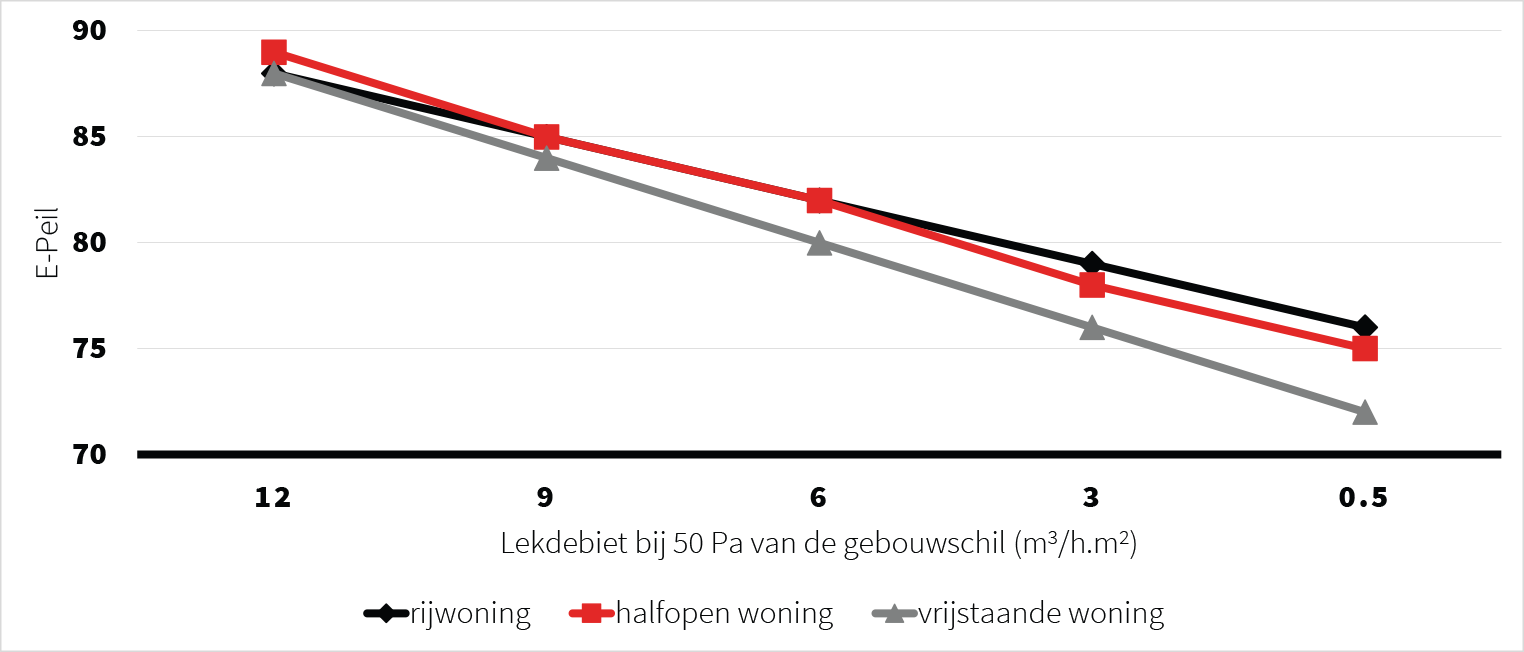It will be clear that it has gradually become very difficult to meet the requirements without paying attention to airtightness. Which is logical as uncontrolled ventilation losses being the reason for quite a lot of heat loss, draft, poor acoustics and vapour or moisture problems. Good airtightness and a high-quality building envelope go hand in hand. Furthermore, good airtightness is one of the most economical ways to improve the energy performance of a building. The website of the Flemish Energy Agency, VEA, states the following:
“A limited investment with a big impact on the E-value: attention to airtightness when building a house (e.g. a leak flow of 2 to 3 m³ per hour per m²) may result in a reduction of the E-value by 5 to 15 E-value points. This is measured by way of an airtightness test. If a house is not tested, it is assumed that it has a lesser airtightness of 12 m³ per hour per m². The net energy requirement will also substantially decrease.”
This airtightness test is also regulated and its working method is set out in the European standard EN13829 (method A or B). For example, in Flanders method A must be followed. The leak flow is measured at underpressure and overpressure; the result of the measurement is leak flow at a pressure difference of 50 Pa between the inside and outside. In some countries the value for the report is recalculated at 4 Pa (France) or 10 Pa (the Netherlands). To achieve accurate measurements, many countries have implemented a quality framework for testers.
Window-to-wall joints are of crucial importance; poor execution accounts for an estimated 15% of the total air loss in an average detached house. The Soudal Window System (SWS) is therefore able to make an important contribution to good airtightness.
WHAT IS AIRTIGHTNESS?
The airtightness of buildings is measured based on a pressurisation test or blower door test in accordance with EN 13829. During a test a pressure difference of 50 Pa between the inside and outside is created with the aid of a ventilator and then the flow which is blown through the building envelope by this ventilator is measured. The airtightness of a building can be expressed in two ways: the n50-value and the q50-value.

The total leak flow measured is caused by leaks in the following elements:
- walls, floors and roofs
- joints between floors, walls and roofs
- joints between walls and exterior joinery
- pipe lead-throughs
- joinery, gates
- ...
As the insulation of houses is improving the importance of ventilation is increasing with regard to energy loss. Part of this loss is caused by the infiltration and exfiltration of air through materials and openings in the building envelope. To limit this loss, the aim is to achieve good ‘airtightness’ of the building’s envelope, which will also reduce the risk of damage and draft.
IMPORTANCE
The EPB regulations attach great importance to the airtightness of buildings: the diagram below shows the effect of airtightness on the E-value (source: www.energiesparen.be). An airtight house which is measured can easily gain 10 E-value points. A study of 9 different airtightness assessment methods shows a great variation in the airtightness of wall-to-joinery joints. It varies between 0.01 m³/h/m (AIVC) to 10.2 m³/h/m (ASHRAE), a factor of 1000 difference.

Influence of the airtightness on the E-level at the three sample houses.